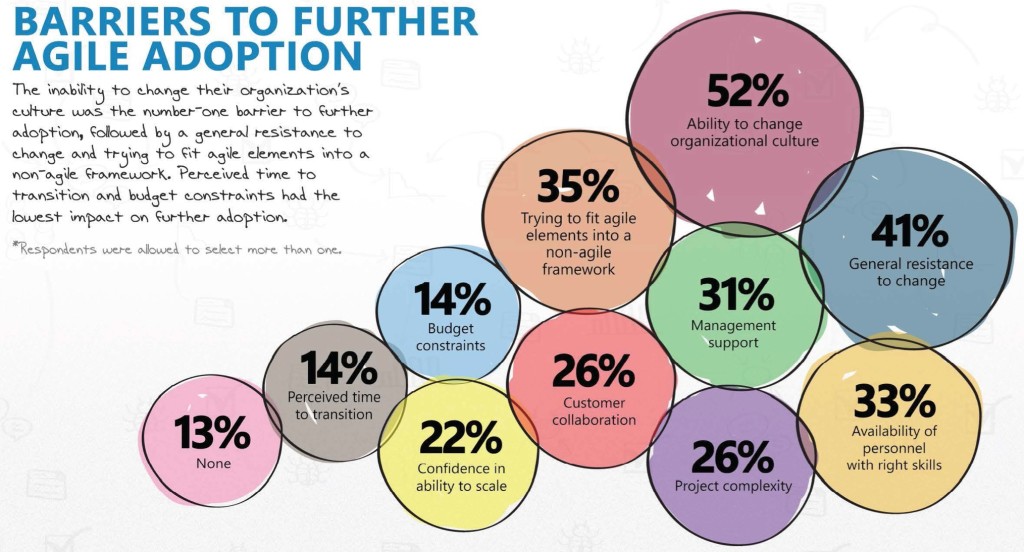
We can look at this organizational culture barrier from two perspectives.
- The organization trying to change its culture to BE agile.
- Adopting a type of agility that aligns with the organizational culture.
Is one better than the other? That depends. I believe both are necessary for true and sustained organizational agility.
Cultural barrier thinking stems from our agile consulting industry trying to force a team-based agility approach change organizational cultures towards agility rather than trying to align agility towards organizational culture. We have learned from many experts across many decades about the significant challenge in investment and time in changing organizational culture. And while organizational culture change can be led with strong new leadership, it should not be the initial goal of an agile transformation but rather part of a larger change initiative; rather organizations should look to develop agility which aligns to the current culture. And while some organizational cultures (create and collaborate) align well with the team-based self-organizing agility, other cultures (control and compete) do not necessarily have this characteristic and forcing these new values in these cultures will likely spur rejection and. In these cases, we must be looking at more technical and infrastructural agility approaches to bring about a more rapid adaptation capability.
Culture has a significant impact on any change initiative, including agility. Visualizing and understanding the current organizational culture is necessary for a successful and sustained agile transformation. It should inform and guide the agile adoption, not be seen as an impediment to it. Working both with the culture to establish agile values which align to the culture, AND working with leadership to understand and address the cultural gaps towards a more agile future are essential to sustained success and growth.
